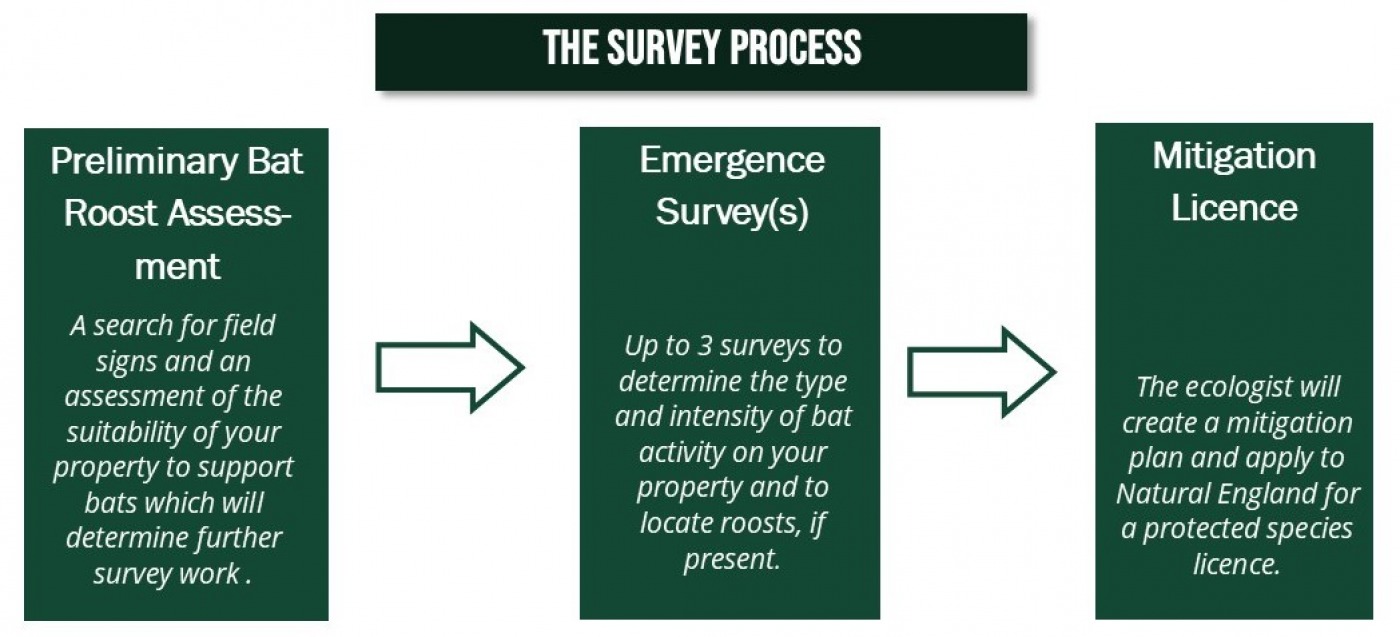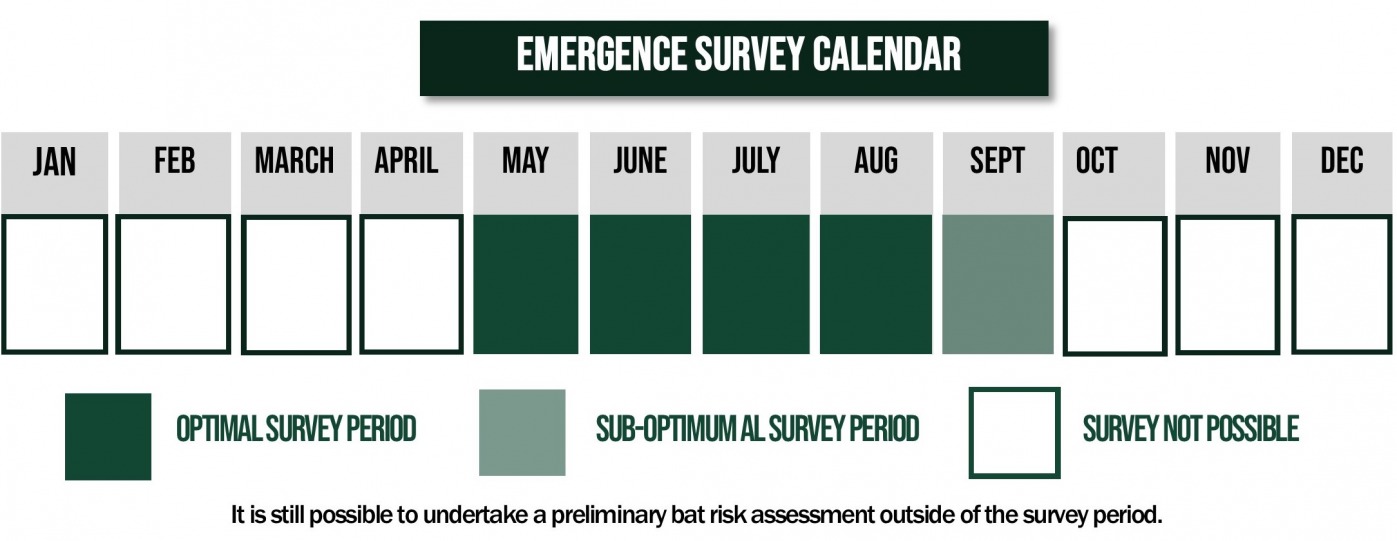
How Do I Know if I Have Bats?
Bats can be found in both rural and urban settings providing they have access to food (known as foraging areas) and a place to rest (a roost site). You may notice bats flying around your property around dusk and dawn but the best way to confirm presence of bats is an initial search for field signs, such as droppings or feeding remains, and/or features that bats would like to roost in, such as gaps between roof tiles or windows. This needs to be undertaken by an ecologist.
When Might I Need an Ecologist?
This initial survey, often referred to as a Preliminary Bat Roost Assessment or PBRA, will be written up into a report suitable to support your planning application. If your development plans include any of the following works then this Assessment will be required by the Local Planning Authority:
- Demolition
- Extension that affects or alters roof voids
- Barn/building conversion
- Removal of trees or hedgerows or extensive pruniing
Bats and the Law
All bat species in the UK are protected by law through the Wildlife and Countryside Act 1981 and are listed as a European Protected Species in the Conservation of Habitats and Species Regulations 2017. It is an offence to:
- Deliberately capture, injure, kill or cause significant disturbance
- Damage or destroy a breeding site or resting place
Failure to comply with these laws can lead to an unlimited fine and up to 6 months in prison.
Why Protect Bats?
Bats numbers worldwide are declining significantly and the UK is no different, mostly due to loss of habitat. It is iessential bats are protected as they play an essential role in the environment controlling insect populations and pollinating plants.
Although finding out you require bat surveys can be frustrating it is good to know that the presence of bats at your property rarely halts development and if timed right, the need for additional survey work will be of little disruption to your plans.

Nocturnal Surveys
- Generally a single emergence (dusk) survey will be carried out if your property is assessed as low suitability. Buildings of higher suitability require additional surveys.
- Trees assessed as moderate suitability or higher for bats will require at least one survey.
- A mitigation licence will only be required if a roost has been identified during the survey work.

Guidelines for bat survey and assessment are found here: Advice - Bat Conservation Trust (bats.org.uk) .
If you would like further information on bats and the implications they can have on your development get please get in touch and we'd be happy to talk through your plans.
